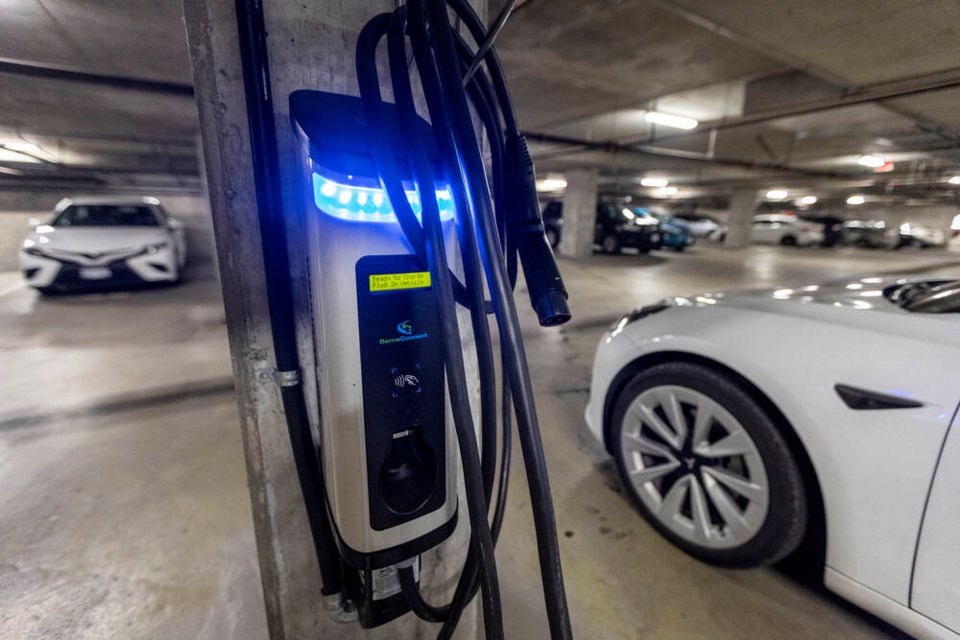A commentary by the president and CEO of the New Car Dealers Association of B.C.
Only days ago, the provincial government introduced legislation that will require automakers to meet an escalating annual percentage of new light-duty zero emission vehicle (ZEV) sales and leases.
The New Car Dealers Association fully supports the transition to clean energy vehicles, but we also believe a flexible approach will be required because the unintended consequences of current plans may ultimately slow the adoption of zero emission vehicles and impact the affordability of new and used cars and trucks.
Bill 39 amends the 2019 Zero-Emission Vehicles Act and will require 26 per cent of light-duty vehicle sales in the province be ZEV by 2026, 90 per cent by 2030, and 100 per cent by 2035.
Tied to the mandated targets is a significant penalty (upwards of $20,000 per vehicle) facing automakers for every vehicle sold under the ratio.
The result? Added costs being passed on to consumers and the prospect of automakers restricting the supply of all vehicles to avoid penalties. New Car Dealers fear a combination of financial penalties and reduced inventory that would drive up the price of all vehicles, both new and used — just as it did during the pandemic.
Our association has proudly administered the Clean BC Go Electric Passenger Vehicle Rebate Program on behalf of the provincial government since its inception in 2011. During that time, B.C. has become a leader in ZEV adoption on a per capita basis in Canada — and among leading jurisdictions in North America and the world.
So far in 2023, electric vehicles make up nearly 21 per cent of all new light-duty passenger vehicles sold in B.C. — the highest percentage for any province or territory in Canada. So, over the short-term, achieving the initial target appears well within reach.
However, several issues have the potential to impact ZEV sales trajectory over the longer term, including:
Softening consumer demand: Early adopters of zero emission vehicles have mostly made their choices but for widespread adoption to occur, greater mass-market interest will be required. This means converting trepidatious shoppers to an entirely new technology, full of range anxiety, charging considerations, home equipment installations and vehicle cost hurdles.
Affordability: The average price of a new vehicle in Canada has reached $66,000 while the average cost of a new electric vehicle is approaching $73,000. Even with point of purchase incentives on new zero emission vehicles, the present price point remains out of reach for many potential customers, particularly low-income British Columbians.
Supply chain realities: Post-pandemic supply chain issues continue to impact vehicle supply. Consumers will always want product choice to address their vehicle needs and lifestyle.
Fast charging infrastructure: An ongoing and significant investment in a convenient, accessible, and reliable fast-charging network is required — along with practical charging solutions for British Columbians who live in apartments, condos, or other multi-unit buildings.
Impact on rural areas: British Columbians living in rural and northern communities continue to face challenges. Many families require pickup trucks or larger SUVs to accommodate their work or family obligations. ZEV affordability, performance in cold weather and access to adequate fast-charging infrastructure are key obstacles.
Our association is recommending that the provincial government put the brakes on and adopt a more flexible approach to mandated targets and the penalty structure, because existing rules will have unintended consequences — increasing the cost of all new and used vehicles and ultimately slowing the adoption of clean energy vehicles.
A more thoughtful approach means we have a better chance of collectively meeting the kind of success we all want, and in doing so creating a cleaner, greener and more affordable future for all British Columbians.
>>> To comment on this article, write a letter to the editor: [email protected]



